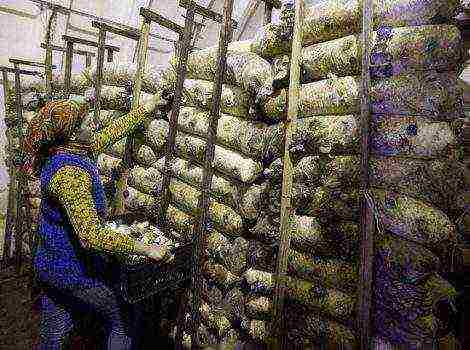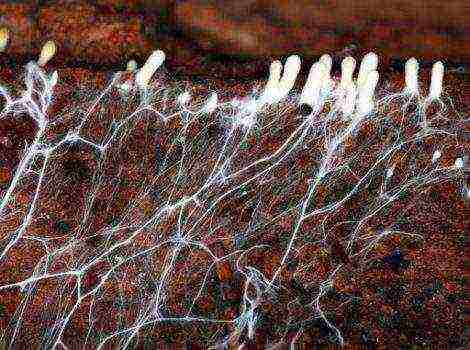Content
How to make compost for champignons with your own hands
The cultivation of mushrooms has reached colossal proportions. Today, not only farms, but also summer residents are engaged in their cultivation. The most popular variety of mushrooms is champignons. To grow them at home, you need to make compost. How to do it right with your own hands will be discussed in this article.
Why do you need mushroom compost
Mushrooms need conditions close to natural nature, moist air and specially prepared compost. Its composition should be loose, nutritious. If you do everything right, after 3-4 months you can get a stable mushroom crop. As for normal soil, mushrooms usually do not grow on it.
A specially prepared composition should consist of sources of carbon nutrition, mineral additives. It is this composition that will provide the necessary conditions for the growth of mushrooms. You can buy ready-made soil for mushrooms, however, it is a very costly business. To reduce costs, the substrate is prepared independently.
Mushrooms, unlike vegetable crops, do not contain chlorophyll. Its absence does not allow the plant to synthesize nutrients, so they are not grown in ordinary beds. Only thanks to a special substrate, the vital activity of microorganisms necessary for the growth of fungi occurs.
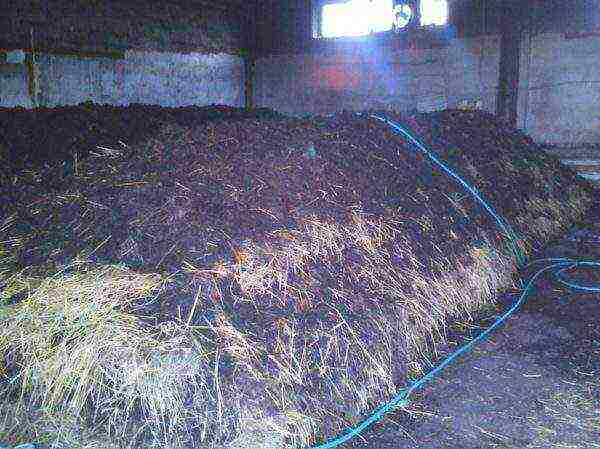
The correct composition of the substrate for growing mushrooms
The compost for mushrooms is made on the basis of mown hay (straw). Some gardeners prepare it from fallen leaves, vegetable waste from the garden. The main thing is that the raw materials are not rotten and infected with infections. Later, the used substrate becomes an excellent fertilizer for vegetable beds. The composition must include:
- straw, dry foliage or grass (these will provide carbon nourishment);
- sources of organic nitrogen (fresh unstable manure or chicken droppings);
- mineral supplements (urea, chalk, bone meal, gypsum);
- bio-activators that promote the fastest preparation of the substrate.
In addition to the composition, experienced gardeners pay special attention to composting. At its core, it is a complex fermentation process for microorganisms. The substrate needs a certain time to be ready for planting the mycelium, so this issue needs to be dealt with in advance.
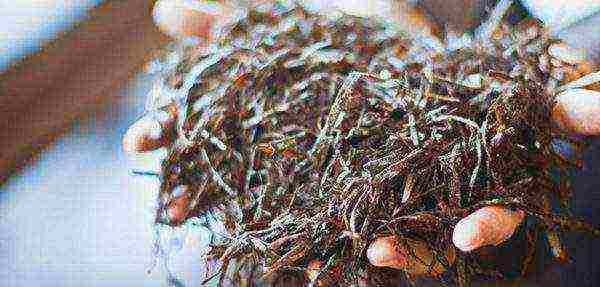
DIY composting
- The composition is prepared in several stages: for this purpose, use specially organized sites on the site. One will be used for soaking the straw, the other will be used for composting.
- With proper fermentation, the compost is not allowed to come into contact with the ground, so the sites must be asphalted.
- The platforms are fenced with wooden boards. The size of the fences depends on the amount of compost. The height of the sides is 40-50 cm.
- Then straw or any other available raw material (hay, grass, leaves) is soaked. For 10 kg of raw materials, 40 liters of water are taken.
- Soaked raw materials are mixed with any organic fertilizer (manure, poultry droppings). The surface is leveled and filled with water.
- If there is a lot of compost, straw and manure are stacked in layers. Tamped and watered.
- 4-5 days the heap is abundantly moistened.Then plaster is poured on top. The resulting mass, so that everything is mixed, is thrown with a pitchfork from one platform to another.
- A well-broken substrate is leveled, after which it is watered for another 5 days.
- To speed up fermentation during watering, add special agents (bio-destructors).
- Every 5-6 days, the substrate is shifted from place to place, as the people say "interrupt." This is necessary so that air gets inside, then microorganisms will well decompose manure with straw.
- The substrate is prepared for 24-25 days. During this time, it will become suitable for growing mushrooms. The resulting composition will provide nutrition to the mushrooms for 6-7 weeks.
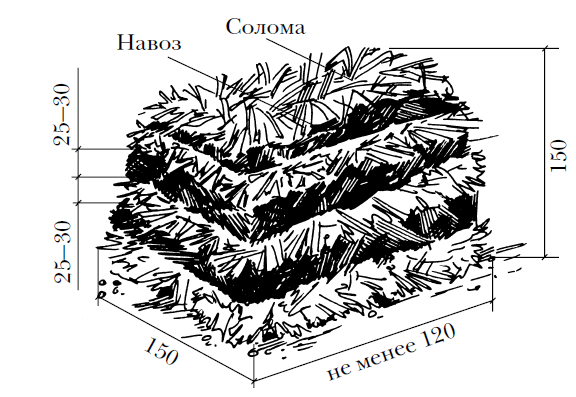
Required materials and equipment
To prepare the substrate, straw and manure are taken in equal proportions. You will need a hose for watering or a watering can. A canopy over the site to prevent the compost from being washed away by the rains and it does not dry out. You will also need a pitchfork. The formulations may vary, as there are many options for its preparation. The most popular composition is prepared from the following components:
- straw - 100 kg
- bird droppings - 30 kg
- cow dung - 30 kg
- urea - 500 gr
- gypsum with chalk - 8 kg
Straw with organic fertilizers and mineral components are mixed and regularly moistened. To keep the pile wet, you need to water in the morning, in the evening. Every 5 days, interrupt a bunch from place to place. The finished substrate should have a loose consistency and stick to your hands.
Preparation of components
The manure is taken fresh, if it lies down for a long time, it will not contain the required amount of microorganisms. Straw or grass must not have mold or rot.
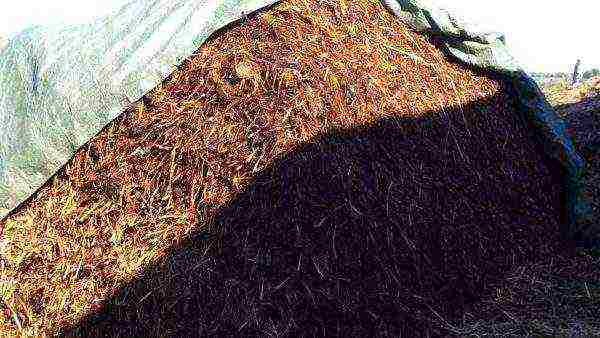
You can water it with plain water or with the addition of fermentation activators. The straw must be soaked. The dry components are added during the mixing process, taking into account the proportions to be respected.
Composting technology
The process of preparing the substrate for champignons is long and complicated. If you follow all the recommendations, the result will be excellent raw materials for growing mushrooms. On a self-prepared substrate, you can grow 100-150 kg of fresh mushrooms.
The mushrooms grown in this way are economically viable for the purpose of selling. The technological process of breaking up the compost is as follows:
- 1 day - laying raw materials on the site
- Day 7 - interruption with the introduction of plaster
- 14 days - watering, interrupting
- Day 20 - interrupting, watering
- 25 days - interrupting the finished compost
In order for the pile to rotate qualitatively, the straw can be pre-crushed in a feed crusher. Thus, you can grind large grass, leaves, branches.
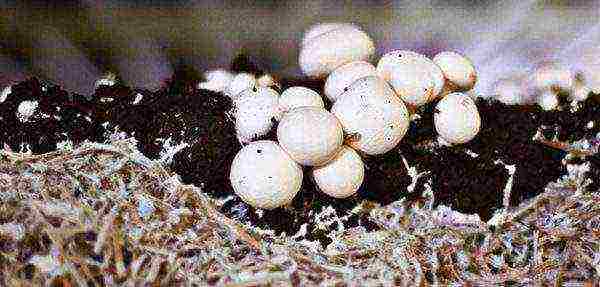
Cooking time
Depends on the raw materials, the degree of their grinding and the season. Fermentation is faster in hot weather. Uncrushed raw materials can rot for years. In this case, you need to use biological products Baikal, Renaissance, Radiance.
However, you can do without them, experienced gardeners use yeast or whey for this purpose. It is better if the raw material is overdue for several days than not completely fermented. On average, straw and manure compost takes 22-25 days to prepare.
The labor expended on the preparation of compost will be more than justified. The better the composition, the richer the harvest from the mycelium will be. Subsequently, the used substrate is scattered over the beds or greenhouses, it will still serve other plants.
